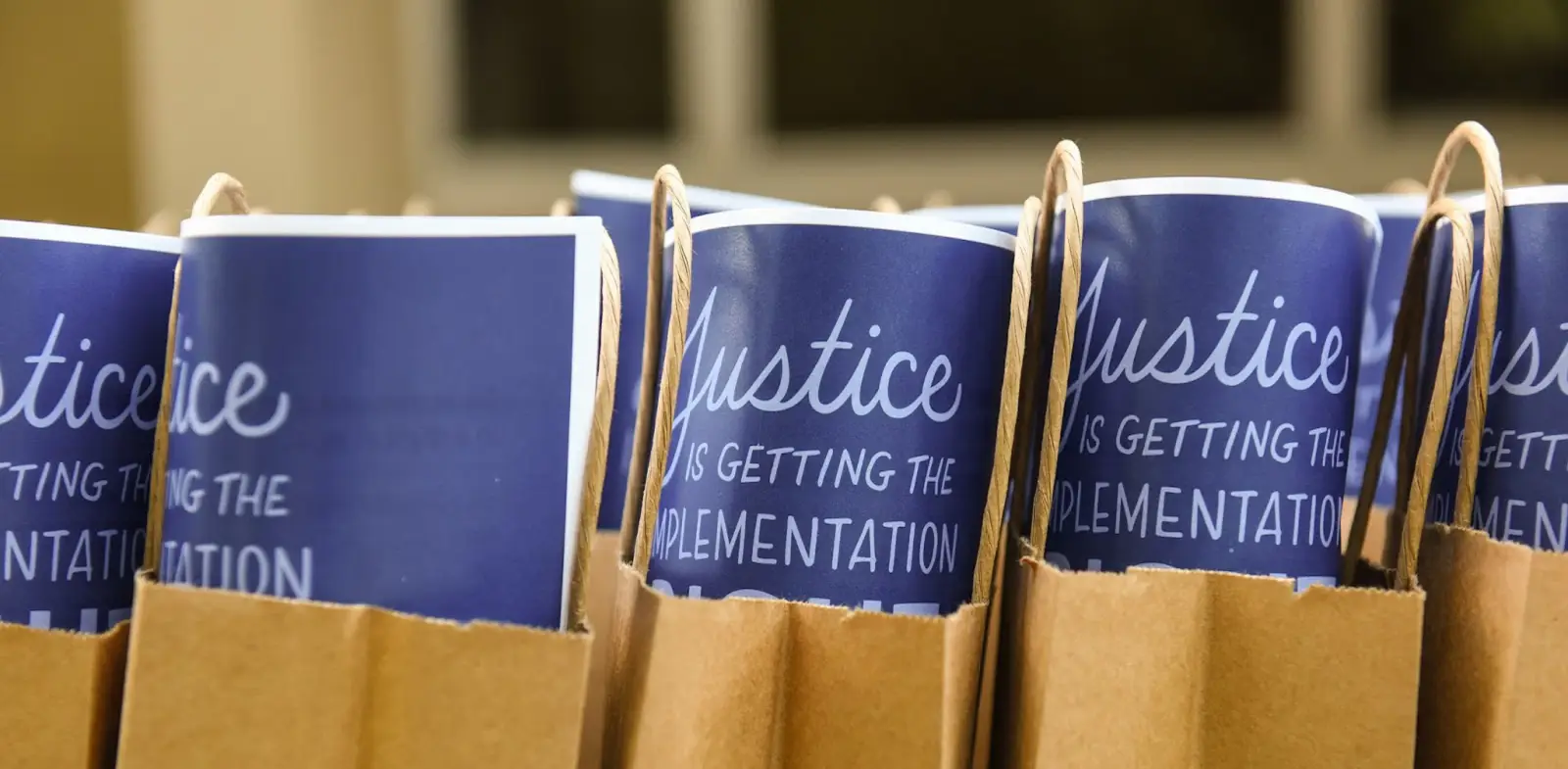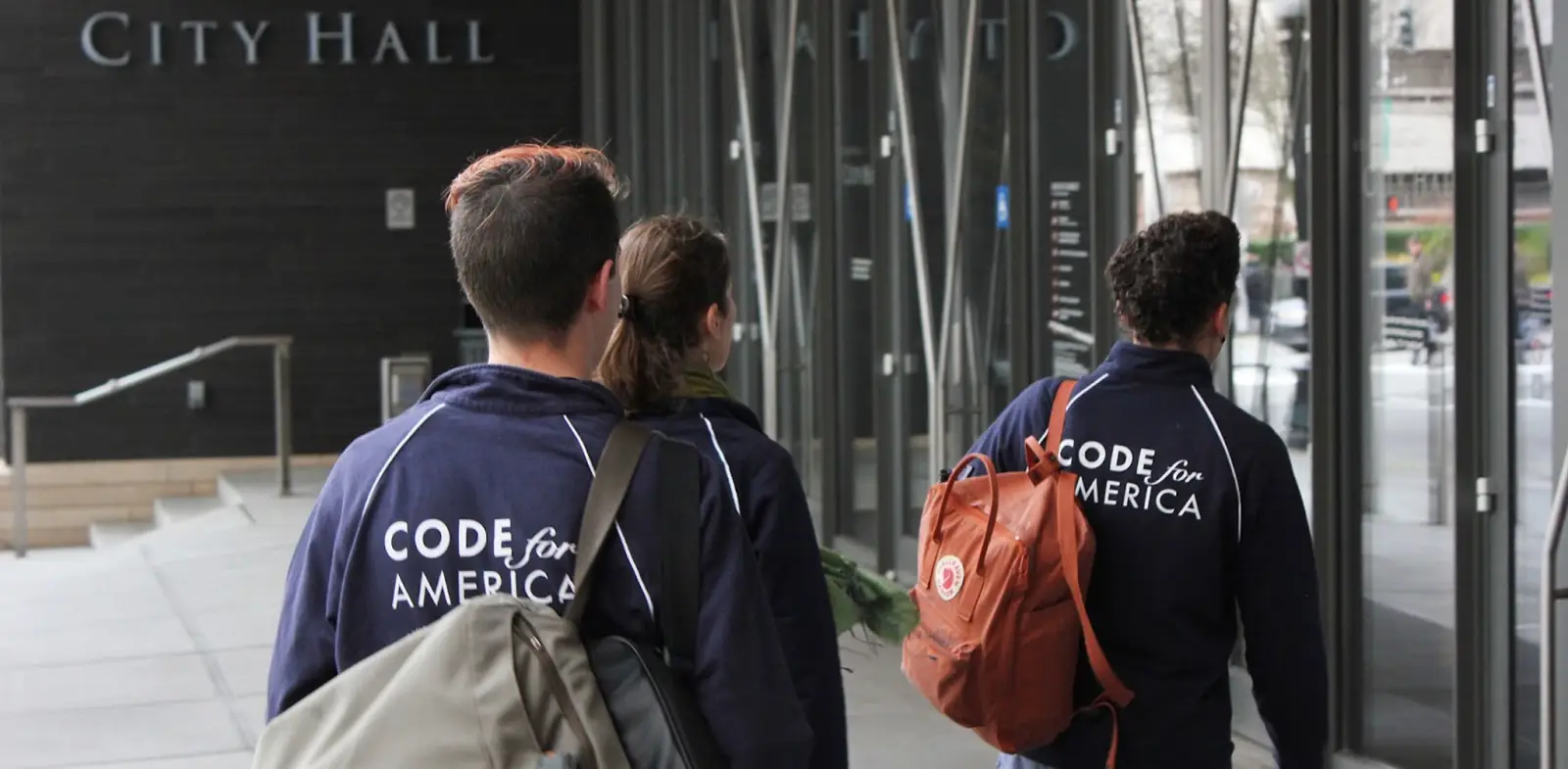Mobile technology has created an endless proliferation of apps and hacks for the upper middle class: expert laundry folding, midnight cookie delivery, the Uber-equivalent of private jets. For many low-income Americans, however, the world is frustratingly analog. Registering for housing assistance, procuring food stamps, signing up for health insurance, clearing criminal records — these basic services require in-person meetings, punishing wait times, and endless bureaucratic hoop-jumping. That’s all changing, thanks to the civic-minded, technology-forward Code for America, a nonprofit that connects technologists and advocates with local and state governments in order to make government services more accessible to all.
Founded 10 years ago, Code for America seeks technological solutions to problems rooted in the government’s over-reliance on outmoded technology (snail mail, fax machines), flawed user experiences with its existing technology, and the isolated data that keeps these systems moving at a glacial pace. For Code for America, this might mean sending out text reminders in lieu of paper notices that are often ignored or discarded, building public assistance apps to function like mobile banking (with real-time communication, encryption and privacy), or embedding web-based software into government services where previously there was none. “We believe that government can work the way it should, so we’re on a mission to prove it,” says Code for America’s founder and executive director Jennifer Pahlka. “By making government services for the public that work the way you would expect them to, we get better outcomes for the American people.”
Since its inception, Code for America has cast itself as a go-between for constituents and government, a role powered by (Objectives and Key Results) (OKRs). The nonprofit first identifies bureaucratic problems that plague the system, then creates benchmarks of progress — ambitious and actionable OKRs designed to ultimately help remove barriers to employment, housing, and other benefits for thousands of people. With each of its projects, Code for America seeks to leverage OKRs as a powerful force in government, taking them beyond their widespread use in tech companies like Intel or Google. Of course, the two industries frequently overlap these days, since even well-intentioned public policy can backfire without technological expertise. That disconnect is precisely what drives Code for America to create digital outreach programs like Clear My Record.
Consider that about 70 million people in the United States (roughly one-fourth of adults) have a criminal record. Legislation specifically intended to relieve a great burden on the public has failed because of poor government implementation. People simply don’t know they are eligible for record clearance, or can’t complete the process which, by design, is confusing and cost prohibitive. Code for America understood that transparency in the process would be better for everyone, but especially for the vulnerable. “Our mission is to make government work for people who are facing conditions of poverty and incarceration,” says Lou Moore, the company’s chief technology officer. “When digital services don’t work well, that disproportionately impacts low-income people.”

To date, Code for America’s Clear My Record has helped 10,000 people facing barriers to jobs and housing connect with lawyers who can readily prepare clearance paperwork and submit it to the courts. The intervention also helps restore trust in the process — a feat that wouldn’t have been possible without OKRs. For example, the original version of Clear My Record, which debuted in 2016, connected applicants with public defenders in over a dozen counties across California. However, millions of people are eligible for relief, and existing “clean slate” programs are at capacity and under-resourced. Code for America needed to find a way to overcome this capacity bottleneck. So, they built a new prototype of Clear My Record the following year, which allows applicants to represent themselves “pro se,” meaning without a lawyer.
This new version shows it is possible for the government to proactively review convictions and automatically clear eligible records. Code for America integrated Optical Character Recognition (OCR) into the prototype, which could scan state criminal records, or “rap sheets,” and automatically fill out the required paperwork. By 2018, Code for America had proved that its automation technology worked and began making it scalable to a larger market. They used a process called cascading — creating board level goals that feed into team goals — combined with quarterly benchmarks to ensure that each iteration would have higher potential for impact. “OKRs helped us focus on the right things so that we knew we had thoroughly explored our growth opportunities,” says Moore. All of these changes paved the way for the program’s success and relevance.
Knowing that Key Results are numerically-based expressions of progress towards an Objective, the team has thus developed a “tree of metrics” that ladder up to its ultimate goal, then pairs each of those metrics with strategies for improving them. Clear My Record’s numerical goal for 2019 is to clear a total of 250,000 convictions. Reaching such a lofty Objective is made more tangible by breaking down the big-picture into smaller targets, while never losing sight of the nonprofit’s so-called North Star Metric: “The metric that best measures whether a project is fulfilling its mission,” says Moore.
The North Star metric, in this case, might be to clear all eligible records. But the key to execution is the constellation of tiny, actionable goals around that metric: boosting the number of convictions cleared, expanding the technology to automate more record clearance remedies, identifying new partners for automated record clearance, and integrating with courts. OKRs helped facilitate continuous conversations around strategy, which in turn allowed Code for America to implement that strategy across teams, including marketing, finance, and outreach. They worked to grow their partnership capacity for statewide expansion and accelerate growth in jurisdictions they already served: for example, reaching a four-week rolling average of 350 applications per week by the end of a given quarter.

To be sure, goals often change as legislation and technology evolve. Luckily, the organization was able to harness political momentum during the development of Clear My Record, while using OKRs to pivot away from its original hypothesis, building a case for automatic clearance. About the same time that San Francisco District Attorney George Gascón announced his office would proactively clear marijuana convictions, Code for America began to discuss technology it had already built that would help those seeking to clear their records: technology that would both cut costs and relieve the burden for applicants. Progressive District Attorneys are eager to proactively clear eligible convictions covered by Proposition 64 (marijuana legalization) in California, and it turned out the pro se prototype could help with that. Clear My Record was ultimately able to form a successful partnership with the San Francisco District Attorney.
The notion that government can function with increasing transparency is perhaps hard for some to believe, but that’s what makes Code for America such a valuable organization. A nonprofit with the trappings of a startup, Code for America has the potential to increase civic participation, restore public efficiency and implement emerging technology. Whether improving access to food stamps and Medicaid, finding ways to remove barriers through record clearance, or helping people find and keep jobs, Code for America ultimately “makes recommendations to our government partners on how they might remove the friction in the process.”

OKRs help a nonprofit like Code for America gauge traction and success of its prototypes over time. “The OKR process serves as a nice way to clarify which strategies and metrics we’re going focus on in a given quarter,” explains Moore.
Indeed, the OKR narrative arc informs the development of many of the organization’s automated services. Above all, Code for America is focused on running actual services in collaboration with government. That often means showing bureaucratic agencies what’s possible — “building digital services that are so good that they inspire others to change,” says Moore — or helping constituents to help themselves. Since 2009, a series of aggressive but achievable Objectives and Key Results have allowed Code for America to shine the microscope on minutiae while training a lighthouse-sized beam on what matters, thereby enacting profound changes to a system long held to be beyond repair.





